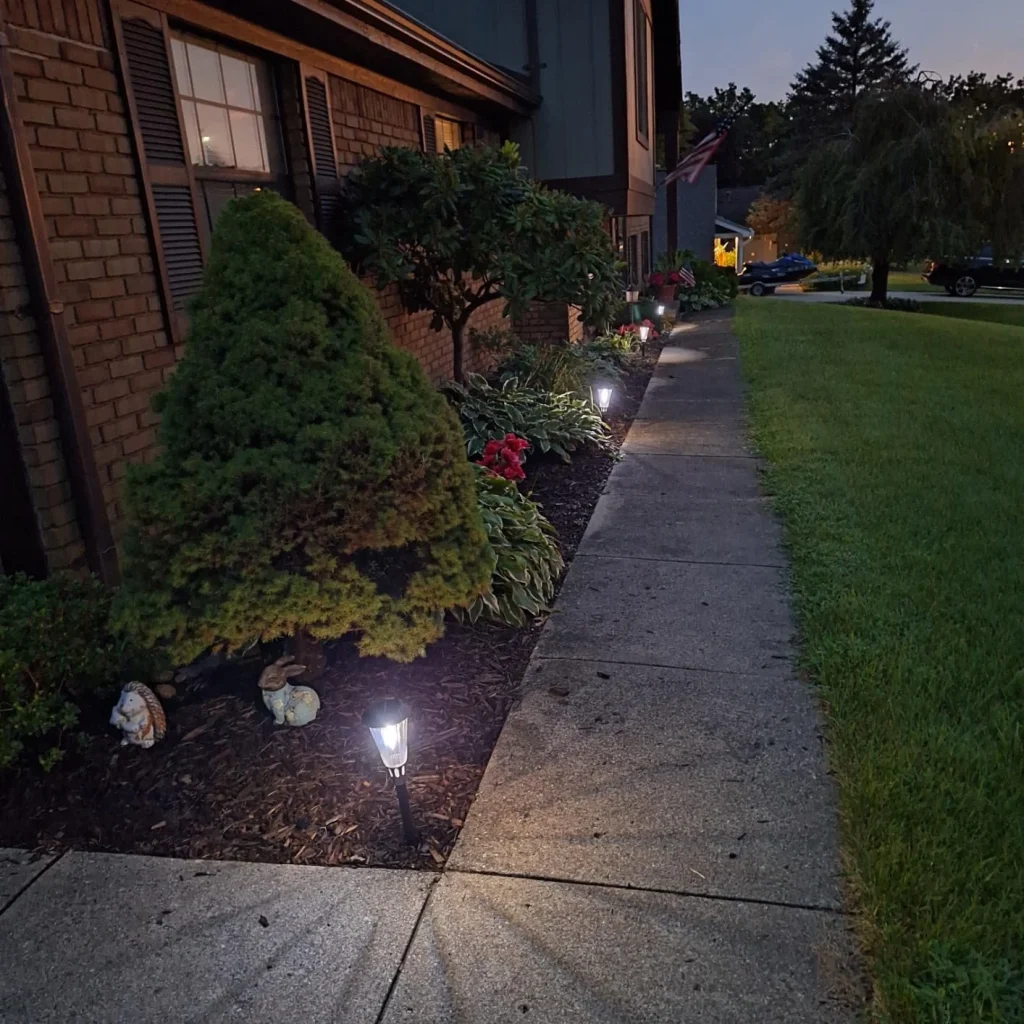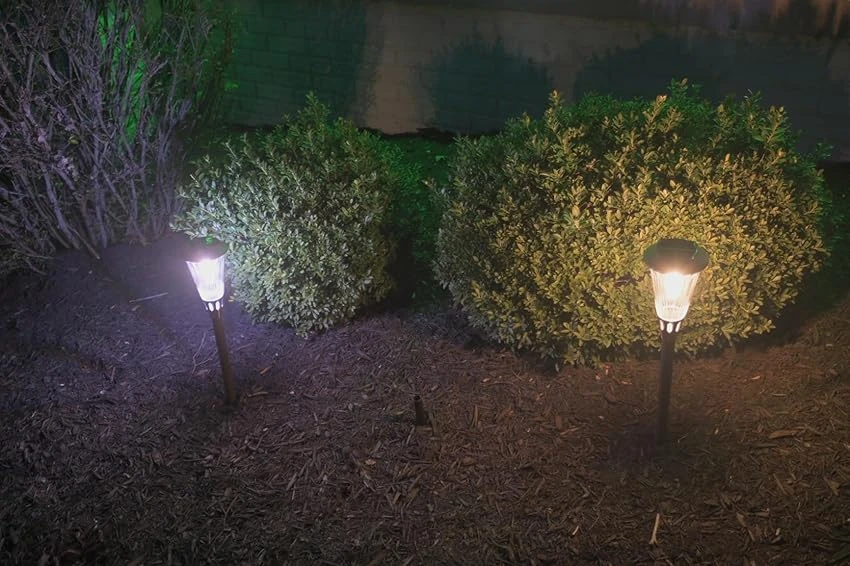To craft a warm and inviting outdoor courtyard or garden, the arrangement of solar lights requires careful consideration. How can these energy-efficient and eco-friendly fixtures serve practical purposes, add unique charm to your garden, and ensure optimal performance of their solar panels? Read on for a detailed guide.

1. Key Considerations for Solar Panel Placement
The solar panel is the heart of a solar light, and its placement directly impacts the fixture’s performance. Ideally, solar panels should be positioned in areas that receive maximum sunlight throughout the day. In courtyards with trees or other obstructions, you can cleverly hang panels on branches to capture ample sunlight. Alternatively, install them in unobstructed corners, such as atop a fence or wall, where direct sunlight is abundant. These spots allow solar panels to absorb light efficiently, charging the battery effectively and ensuring prolonged illumination at night.
2. Balancing Light Fixture Height
The height at which solar lights are installed affects both their lighting performance and aesthetic appeal. If placed too high, the light disperses, appearing stark and disconnected from the garden. If too low, the lights risk being damaged by foot traffic and provide limited coverage. A height of approximately 1.5 meters is generally ideal for courtyard lights. This height ensures clear ground illumination, facilitating nighttime activities, while maintaining harmony with the garden’s overall aesthetic. It also avoids safety hazards associated with overly low installations.
3. Tailoring Arrangements to Garden Zones
Different areas of a garden call for distinct lighting approaches to maximize both functionality and charm.
- Flowerbed Areas: Flowerbeds are often visual focal points in a garden, and surrounding them with short solar lights is an excellent choice. These compact fixtures dot the flowerbed like stars, accentuating the graceful outlines of plants at night. Their low height ensures no harm to plant growth while adding a serene beauty to the scene.
- Pathway Edges: Installing solar lights at regular intervals along both sides of a pathway provides clear guidance for nighttime travel while creating a romantic interplay of light and shadow. As people stroll through, the staggered lights evoke a dreamlike garden ambiance, enhancing the joy and ceremony of the walk.
- Leisure Zones: Hanging solar lanterns in pavilions or under trees is a delightful way to infuse warmth into a garden. As breezes pass, the lanterns sway, casting flickering light that instantly enlivens the leisure area, offering a cozy and relaxing space for nighttime gatherings.
- Distinctive Landscape Features: For fountains, sculptures, or other standout garden elements, targeted solar lighting can significantly elevate their appeal. Placing a few lights around a fountain creates a sparkling effect as water reflects the glow, making the nighttime water feature enchanting. Soft lighting beside sculptures or decorative objects highlights their lines and textures, amplifying their artistic impact.
4. Practical Considerations for Choosing Solar Lights
Selecting the right solar lights involves balancing aesthetics with functionality. Here are key factors to consider:
- Brightness Levels: Choose brightness based on the intended purpose. For decorative effects, soft lighting suffices to set the mood. For primary illumination, opt for higher-brightness models to meet practical needs.
- Battery and Charging Performance: Battery capacity and charging efficiency directly affect nighttime illumination duration. Lights with large-capacity batteries and high charging efficiency store energy quickly during the day, ensuring sustained light at night and minimizing disruptions due to low power.
- Lampshade Material: The lampshade material influences both light quality and maintenance. Clear glass lampshades offer excellent light transmission but collect dust easily. Frosted or acrylic lampshades are dust-resistant and diffuse light softly, creating a warm, comfortable ambiance.
- Waterproof Rating: Outdoor environments are unpredictable, making waterproof performance essential. Choose solar lights with an IP65 rating or higher to ensure reliable operation in rain or harsh weather, extending their lifespan.
Conclusion
Thoughtfully arranging solar garden lights involves balancing efficient solar panel performance with the overall beauty of the garden. By carefully placing lights to suit different zones and selecting fixtures that meet practical and aesthetic needs, your garden can transform into a radiant, cozy haven at night. With Bitpott’s solar lights, you can create an enchanting outdoor space that shines brightly and sustainably.


Leave a Reply